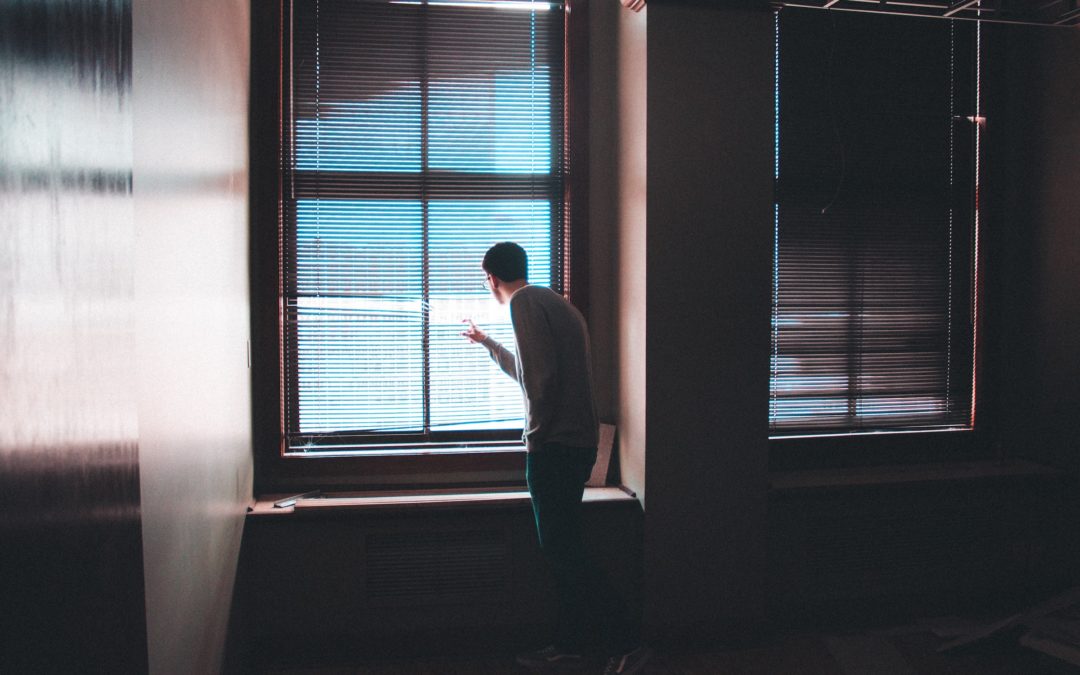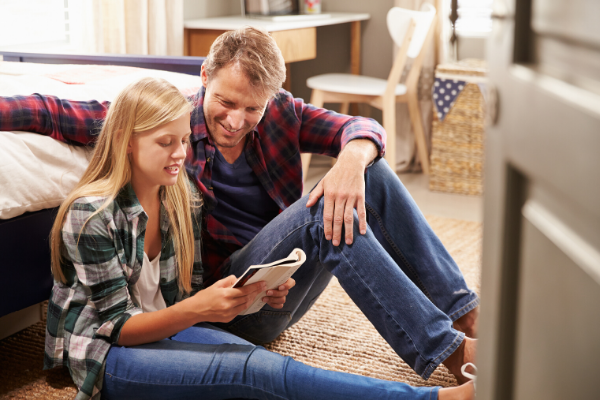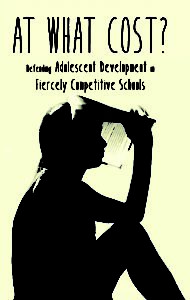
by David Gleason | May 19, 2020 | Blog

One of our deepest needs as human beings is for connection: to feel known, to feel understood, and to feel recognized and valued for who we are. However, in the social distancing culture of Covid-19, our experiences of – and opportunities for – human connection have not only become fragmented but in too many circumstances, they have totally discontinued.
For many educators and students in schools around the world, social distancing has led to unbearable states of disconnection, and thereby, to associated feelings of fear, loneliness, anxiety, and depression. In sum, this amounts to a series of unprecedented, collective, and ongoing experiences of loss and associated feelings of grief.
As I was reflecting on my own varying moods and feelings regarding these multiple losses, I was reminded of psychiatrist Dr. Elisabeth Kubler-Ross’s renowned Five Stages of Grief model. I first encountered and felt supported by these stages almost 30 years ago after the death of my father, but last week – quite unexpectedly – I realized how applicable these stages are for me now, too.
As I thought through these stages, I felt a surprising sense of relief as I realized that my fluctuating – and at times, very challenging – feelings felt somehow more understandable and tolerable, if not more “normal,” when considered within this useful theoretical framework. Even though these five stages were initially presented in a somewhat linear fashion – as if one doesn’t experience the feelings of Stage 2 until having endured or experienced the feelings of Stage 1 – this is not the case.
Since the initial publication of Dr. Kubler-Ross’s seminal work in 1969, practitioners and lay people alike have acknowledged how common it is to experience features of all five stages at different times, or even simultaneously, more like fluid “internal dynamics” of grief rather than linear and progressive stages. That was definitely the case for me.
In a recent Harvard Business Review (HBR) article, Scott Berinato explored these five stages of grief in the context of today’s coronavirus pandemic. To his summary, I have added brief descriptions of each stage and have paraphrased Berinato’s words here:
Denial: An initial refusal to acknowledge that the situation at hand is actually true (“Is this really happening?”)
Anger: Strong feelings of annoyance, frustration and irritation about the situation (“Our whole lives are so disrupted: We want to return to our normal lives!”)
Bargaining: Attempting to negotiate terms for a better outcome (“Ok, if we all shelter in place and maintain social distancing, we’ll be ok, right?”)
Depression: Prolonged … or intermittent … feelings of sadness, anxiety, and pessimism (“I’m so sad, and I don’t know when this whole situation will end.”)
Acceptance: Surrendering to the reality that this crisis is truly happening (“This is happening. I need to figure out how to proceed and adapt.”)
As you read through these five stages – or dynamics – of grief, you may identify, as I did, with these feelings and perhaps find some comfort in the realization that your feelings are both legitimate and typical. You are not alone. In fact, from much of the reading I’ve been doing throughout this crisis, I have observed that people all around the world are experiencing very similar feelings, confirming Dr. Kubler-Ross’s initial perception, if not her conviction, that these stages of grieving are universal.
Without a doubt, educators, students, and their parents everywhere are, collectively, experiencing multiple and simultaneous losses:
- the loss of not being able to gather together for classes and meetings;
- the loss of not being able to meet friends and colleagues for meals in school cafeterias;
- the loss of not sharing spring on the same campus;
- the loss of not being able to celebrate – in person – schools’ and colleges’ traditional and time-honored year-end rituals and ceremonies (proms and graduations, etc.);
- perhaps mostly, the deep loss of not being able to just hang out with each other.
To be sure, these are profound losses. Please be assured that it is absolutely normal and healthy to respond to these losses with the varied feelings and dynamics of grief they naturally evoke. In the words of Scott Berinato in the HBR, “If we can name it, perhaps, we can manage it.”
In my 30-plus years as a psychotherapist, a clinical phenomenon I have observed many, many times — and have come to know deeply — is that language – the “naming it” – is one of the greatest organizers of our emotional experiences. Why else do you think Sigmund Freud termed the process of psychotherapy as “The Talking Cure?”
As we continue to muddle through the coming weeks and months, my hope for all of us is that the language of these Five Stages of Grief can provide a useful emotional framework within which to understand, and perhaps, manage our feelings more effectively.
To conclude, I want to offer a message of hope. Another one of Dr. Kubler-Ross’s well-known quotations is this: “The most beautiful people we have known are those who have known defeat, known suffering, known struggle, known loss, and have found their way out of those depths.” [1]
As an experienced psychotherapist, I encourage you to make an effort to name your feelings. Further, try to acknowledge that while you are – as we all are – experiencing suffering, struggle, and loss, we also have the empathetic capacities within us to be gentle with ourselves and with those around us; to be kind and caring to ourselves and others, and to join forces with one another – even if by phone or online via Zoom or Skype – to “find our way out of those depths” together as we strive to live in fragments no longer, and only connect.
[1] Kubler-Ross, E., On Death and Dying. The Macmillan Company, New York, 1969

by David Gleason | May 13, 2020 | Blog
Ironically, in the Covid-19 pandemic, schools and families have been forced to make massive reactive changes, ones they could never have imagined had this crisis not occurred. While most of these new ways of living and learning are unsettling and distressing, I’ve observed glimmers of silver linings and perhaps some culture changes that may be worth holding onto.
Take, for example, one of the most frequently identified problems in high-performance, hyper schooling culture — the overscheduled nature of students’ everyday lives. I explored many of the negative consequences of this culture in my book, At What Cost? Defending Adolescent Development in Fiercely Competitive Schools.
The shift to online academics and halt of extracurricular activities have transformed students’ time, even in the most high-pressured school environments:
- academic schedules have been reduced because of the nature of constant online learning;
- grades in most schools and colleges have been changed to a pass/fail status;
- all extracurricular activities and after-school sports have been canceled.
Even the Advanced Placement exam has been transformed into an online 45-minute test that students take from home. Of course, this doesn’t remove the stress involved in studying and wondering what one’s score will be; that uncertainty remains.
Another aspect of students’ pre-pandemic lives linked to overscheduling was insufficient sleep. As I’ve said many times, chronic sleep deprivation – in adolescents and adults alike – manifests in a variety of unhealthy and dangerous ways, such as chronic anxiety, car accidents, and depression.
Now, however, with no early morning commute to school or several hours of extracurricular activities, many high school students are able to sleep more than the recommended eight or nine hours per night. One parent with whom I’ve spoken recently reported that her teenage son has been sleeping up to 12 hours per night on a regular basis. Consistent with an adolescent’s natural circadian rhythm, his sleep schedule is from 1:00 a.m. to 1:00 p.m.!
Further, as if it hadn’t already been popular, the practice of mindfulness meditation has probably never been more in demand. Because of heightened anxiety and stress levels about the pandemic, many students, teachers, administrators, and parents alike are turning to the practice of mindfulness to offset their hyper-aroused states of anxiety.
In each of the many webinars I’ve presented lately, I’ve polled participants about the stress they’re experiencing and observing:
- What signs of symptoms of stress are you observing in your colleagues or experiencing yourself?
- In what ways you have been trying to cope with your stressful feelings?
Most strikingly – but not surprisingly – is that “anxiety” has been the most frequently reported symptom of stress and that “spending more time with family and friends” has been the most frequently reported strategy for coping with this stress.
A Healthier Balance for Students and Families?
Is it possible that individuals and families are re-establishing old – but new to them now – habits of prioritizing time with family and friends over relentless hours of work? Although temporary at this point, are individuals and families striking a new and healthier balance between work and play or between work and relationships? According to Sigmund Freud, “Love and work are the cornerstones of our humanness!” Could it be that a silver lining is emerging from this world-wide crisis — that we are reconnecting with a healthier balance between “love and work?”
While this new balance certainly has its downsides – students are missing in-person interactive class discussions and socialization; graduating seniors are missing out on traditional and time-honored rituals and celebrations; and social distancing has led to increased social isolation, anxiety, and loneliness for many – there may still be aspects of this massive period of change that may be worth keeping and continuing.
As this pandemic and its restrictive living conditions continue for the near future, at some point, we need to ask ourselves how much of the pre-pandemic “status quo” do we want to return to? How will the future of education and work-life balance unfold in light of the massive changes that schools, businesses, and families around the world have had to make?
Once communities and schools begin to reopen, will we – administrators, teachers and parent — strive to keep our students “developmental integrity” in mind or will we rush back to the overscheduled and sleep-deprived conditions that characterized children’s and adolescents’ lives just a few months ago?
Maybe the hyper-schooling culture of the past doesn’t have to be so “hyper” after all? Maybe courses – even AP and IB courses – can be taught in such a way that both deliver meaningful content and allow students to get the sleep they need for their health and wellbeing. Maybe students could be granted more unstructured time, time we now know from neuroscience that students need not only to socialize with one another but also to rest, dream, and imagine their futures.
While we have always been responsible for the cultures we have created, over the past few months, we have had to create an entirely different culture – one that is certainly challenging, often filled with anxiety and not sustainable for the long run. However, this new culture may have a few silver linings that may be worth keeping.
As a colleague noted in a recent video meeting of professionals, “This crisis is not the end, it is a pause.” [1] We adults are still responsible for the cultures we create. Now that we’ve made massive changes not only to how we educate our students, but also how we’re living our own lives, once this pandemic-induced pause is behind us, I welcome your thoughts and ideas:
What surprisingly joyful or positive encounters have you experienced or witnessed that may be worth keeping or continuing?
How might we begin to imagine living and learning more broadly?
What matters most to you?
[1] https://www.mobiusleadership.com/executive_team/catherine-a-cotins/




